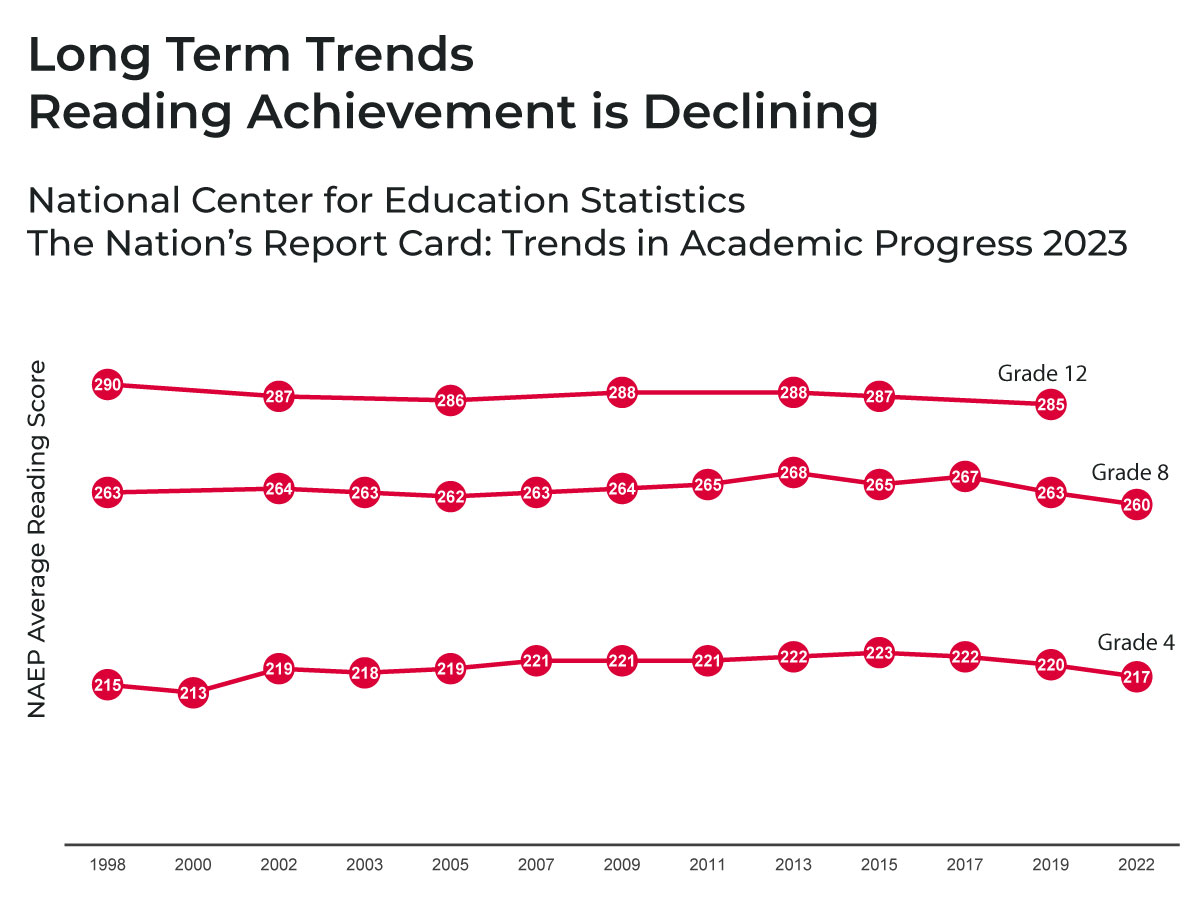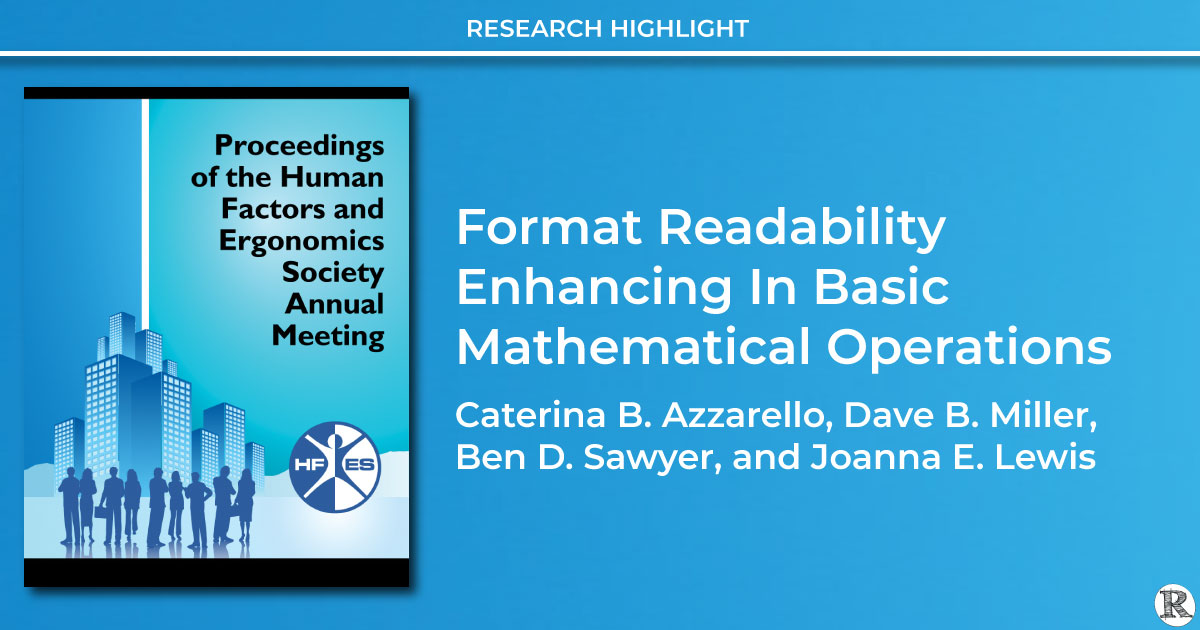Better Readability

 Educational content can be formatted for each student in his/her best reading format, enhancing the student’s ability to learn
Educational content can be formatted for each student in his/her best reading format, enhancing the student’s ability to learn
 When Readability Format becomes a support rather than a barrier, students can build and leverage their reading strengths across all of their education.
When Readability Format becomes a support rather than a barrier, students can build and leverage their reading strengths across all of their education.
Susanne Nobles, PhD
Chief Academic Officer
ReadWorks.org
Read More Effectively,
K – Gray
Technology provides an opportunity for personalized learning, which moves from a one-format-fits-all approach to one tailored for the student. Children learning to read and older students reading to learn benefit using apps and websites that enable the reader to personalize their text format. They can instantly improve their speed, accuracy, and comprehension.
Reading success creates more motivation to read, which in turn creates more learning, and the virtuous cycle repeats. What might our students achieve when they experience increased reading success? Will greater reading confidence generate more success as students identify themselves as “good readers”? How many more students might be willing to go further in the education system if reading experiences are improved? What more might these students do with this increased capacity for learning?
Better reading experiences create more equitable learning environments, expanding access to educational, career, and life opportunities.
↑ speed
↑ accuracy
↑ comprehension
K – 12 Education
The Nation’s Report Card — The Shocking Reality
 The National Assessment of Educational Progress (NAEP), measures reading levels for a sample of students nationwide. Experts consider the test highly reliable. Recent results (4th, 8th, and 12th grades) show that since 1998 reading scores remain relatively flat/declining with just over one-third of students reading at a level the NAEP defines as “proficient.” More here…
The National Assessment of Educational Progress (NAEP), measures reading levels for a sample of students nationwide. Experts consider the test highly reliable. Recent results (4th, 8th, and 12th grades) show that since 1998 reading scores remain relatively flat/declining with just over one-third of students reading at a level the NAEP defines as “proficient.” More here…
In summary,
- Relative reading ability is unlikely to change after the 4th grade
- 64% of 8th grade students are unable to read proficiently
- Poor readers in 8th grade remain poor readers in 12th and throughout life
- Reading scores remain relatively flat in the US
Education overall and reading, in particular, have long been the basis for both economic stability and economic mobility. Seventy-nine percent of low-income 8th graders cannot read and comprehend at grade level.  Research has shown that when students are not proficient readers by fourth grade, they are far less likely to complete high school, with serious consequences for economic and civic prospects for the remainder of their lives.
Research has shown that when students are not proficient readers by fourth grade, they are far less likely to complete high school, with serious consequences for economic and civic prospects for the remainder of their lives.
Can a simple change to text format break the cycle, expand educational potential, further ignite learning in academic contexts, and create more economic opportunity?
* The NAEP Reading scale ranges from 0 to 500. Some apparent differences between estimates may not be statistically significant.SOURCE: U.S. Department of Education, Institute of Education Sciences, National Center for Education Statistics, National Assessment of educational Progress (NAEP), 1998, 2000, 2002, 2003, 2005, 2007, 2009, 2011, 2013, 2015, 2017, 2019, and 2022 Reading Assessments. https://www.nationsreportcard.gov
Higher Ed and Adult Learning
College and University Learners
In higher education today, students access materials for learning in a variety of formats, from print textbooks to e-books, and PDFs. Given the importance of digital environments for delivering core college course material today, we must consider ways that students can read deeply in online environments.
Textbooks, open educational resources, and academic articles may not be designed to be aligned with readers’ learning needs. In fact, current reading platforms do not allow for easy personalization of the reading format with little to no option for the reader to control the way the text is presented.  The Readability Features (e.g. user ability to control size, shape, and spacing of text) necessary to take advantage of the opportunity to elevate reading performance are missing from most reading platforms.
The Readability Features (e.g. user ability to control size, shape, and spacing of text) necessary to take advantage of the opportunity to elevate reading performance are missing from most reading platforms.
Adult Literacy Learners
A new study by Gallup on behalf of the Barbara Bush Foundation for Family Literacy finds that low levels of adult literacy could be costing the U.S. as much $2.2 trillion a year. Read more: The Cost of Low Adult Literacy
According to the U.S. Department of Education, 54% of U.S. adults 16-74 years old, about 130 million people, read below the equivalent of a sixth-grade level. Low literacy is correlated with several important outcomes such as personal income, employment levels, health, and overall economic potential.
 With the critical and growing importance of adult and continuing education in the United States, it is essential to find ways to enhance learning. Reading formats can be personalized so that adult learners can be the best reader they can be.
With the critical and growing importance of adult and continuing education in the United States, it is essential to find ways to enhance learning. Reading formats can be personalized so that adult learners can be the best reader they can be.
Learn More
Readability Matters’ Proof of Concept Paper, Adobe Tech Proof of Concept II
Review the Readability Features available today, Readability Hacks
Readability Matters for College and University Learners
Increase Readability, Reduce Cognitive Load
Fluency: The Canary in the Reading Coal Mine
Dr. Timothy Shanahan on Speed as a Measure of Proficient Reading
Two-Part Readability Article from the EdTech Center @ World Education:
Readability Features & Technology for Better Reading (Part I)
Readability Features & Technology for Better Reading (Part II)








